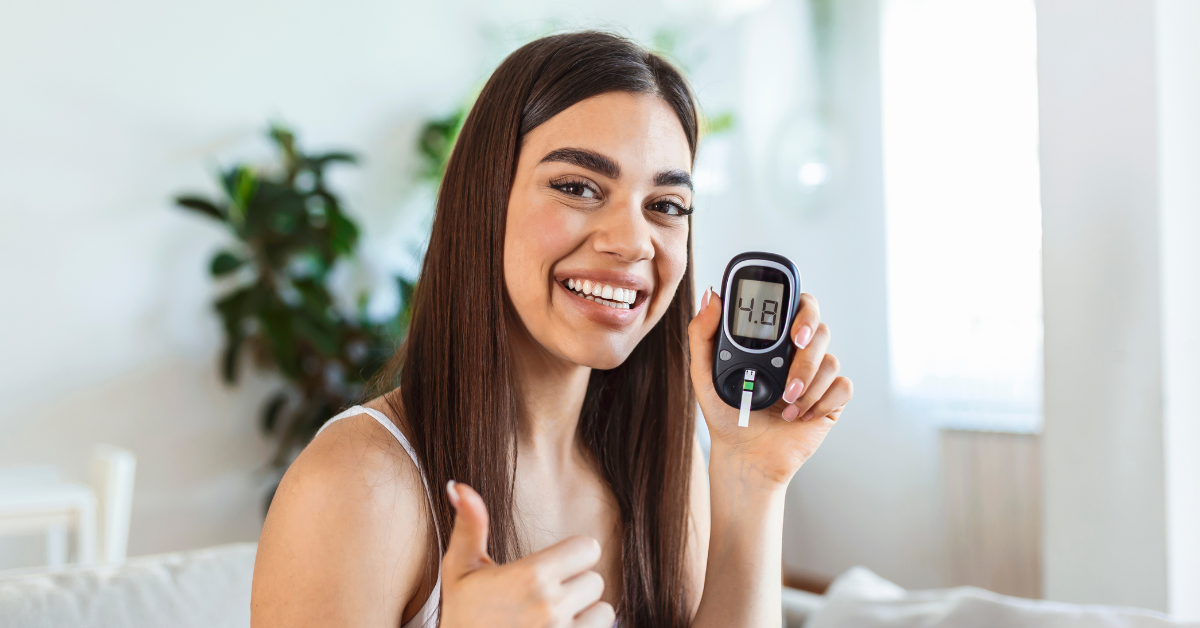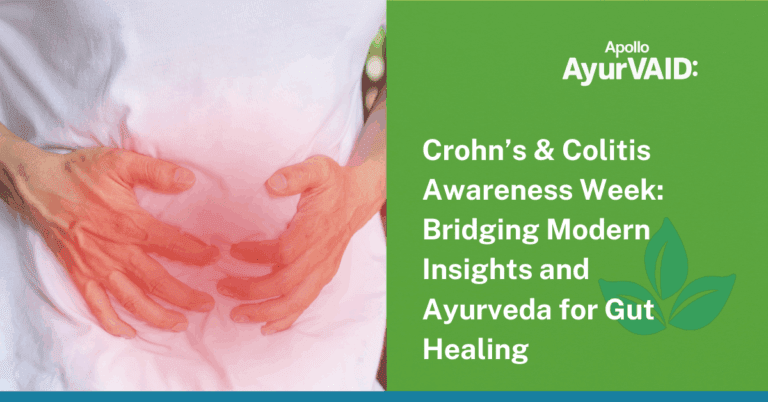
Web Stories
Step Into the Story: Explore Now
Introduction
Maintaining a consistent, healthy blood sugar level is essential for overall well-being. Fluctuations in blood sugar can impact physical and mental health. Low blood sugar, also called hypoglycemia, can cause fatigue, dizziness, confusion, and even seizures or loss of consciousness. Understanding what to eat when blood sugar is low is necessary to regain balance. This blog discusses appropriate food options, using Ayurveda principles to assist you in effectively managing low blood sugar. Knowing what to eat when your blood sugar is low can empower you to act quickly and preserve your health. If you’re wondering what food to eat for low blood sugar or what to eat when sugar is low at night, this guide provides useful tips based on both contemporary knowledge and ancient Ayurveda.

What to Eat for Low Blood Sugar
Many things might be responsible for low blood sugar (hypoglycemia), such as overdosage of diabetes medication, missing meals, strenuous exercise, medical conditions such as hormone deficiencies, liver disorders, kidney disorders, tumors, or high alcohol consumption. Certain medications, genetic disorders that affect carbohydrate metabolism, and autoimmune conditions can also cause hypoglycemia. Reactive hypoglycemia, another serious condition is brought on by eating, usually a few hours after a meal, especially after high-sugar items that stimulate the overproduction of insulin.
When experiencing low blood sugar, the primary goal is to raise it as quickly and efficiently as possible. Carbs that the body easily digests are usually the best consideration.
Ayurveda explains that hypoglycemia or low blood sugar is a sign of the body’s inability to regulate metabolism, rather than a response to hunger. There is an imbalance in Samana Vata (located in the stomach responsible for metabolism), and Pachaka Pitta ( for digestion).
Dietary remedies for hypoglycemia include customizing your diet based on your feelings and consulting a doctor before making significant changes to your health routine. Some beneficial ingredients for hypoglycemia include carrot, coconut oil, ridge guard, and ghee, which are nutritive, cold, easy to digest, and can reduce the effects of hypoglycemia. To prevent hypoglycemia, avoid foods, and lifestyles that aggravate Vata and Pitta. Fasting between meals is crucial, as eating small meals often trains the body to constantly expect food, leading to a desperate search for quick snacks.
Some of the recommended options are:
- Ripe bananas, raisins, or dates balance Vata and Pitta Dosha. They are naturally energizing and balance Doshas. Bananas are a wonderful remedy; they are sweet, and cooling, making them very effective for people suffering low blood sugar.
- Ayurveda recommends pure fruit juices such as watermelon, orange, etc without additives to provide instant strength. Pomegranate, apple, and grape juices are much appreciated for balancing blood sugar levels and imparting strength.
- Organic honey is a natural Yogavahi (catalyst) that helps transport nutrients to deeper tissues. Take 1-2 teaspoons with water for optimal absorption.
- Crackers prepared using whole grain and jaggery help balance all three doshas (Vata, Pitta, and Kapha) while providing sustained energy. These are grounding and nourishing the body’s tissues. Adding warming cinnamon helps regulate blood sugar and improves digestion according to Ayurveda principles.
- Rice pudding with cinnamon is nourishing and grounding, perfect for balancing low blood sugar while promoting good sleep.
- Warm milk with turmeric nourishes tissues balances blood sugar, and promotes restful sleep.
- Soaked almonds are highly regarded in Ayurveda for their brain-nourishing properties and ability to balance blood sugar. Soaking them overnight makes them more digestible and enhances their nutritional value.
Dietary Guidelines
- Incorporate complex carbohydrates, proteins, and healthy fats to sustain energy levels. Foods like whole grains, legumes, nuts, and seeds are beneficial.
- Consume small, frequent meals to prevent sudden drops in blood sugar.
- Refined sugars and processed foods can cause rapid spikes and drops in blood glucose levels.
- Stay hydrated, keep emergency snacks handy, and consider your body type when choosing foods.
Note: While these remedies are natural, always consult healthcare professionals for persistent blood sugar issues.
Foods That Won’t Spike Your Blood Sugar
In Ayurveda, nuts are considered “Vata-pacifying” due to their heavy, oily, and warming qualities. They are considered building blocks for ojas (vital energy) and beneficial for nerve tissue.
- Dairy products such as milk and yogurt provide energy. However, they should be consumed at room temperature rather than cold, as cold foods can dampen Agni (digestive fire).
- Yava (barley) Kanji or porridge seasoned with spices like ginger, pepper, and rock salt can maintain blood sugar levels.
What to Eat When Sugar is Low at Night?
To manage low blood sugar at night, consume foods that stabilize glucose levels. Peanuts, whole grain crackers with low-fat cheese, low glycemic index foods, and high-fiber foods can help maintain stable blood sugar levels.
Regular monitoring, bedtime snacks, adjusting insulin doses, and continuous glucose monitoring (CGM) are necessary to prevent low blood sugar at night.
Tips to Avoid Blood Sugar Drops
It is advised to –
- Maintain healthy eating habits
- Include small meals and snacks every 3-4 hours
- Consume fruits, vegetables, and lean protein
- Limit caffeine, and avoid alcohol, especially on an empty stomach, during hypoglycemia.

Conclusion
A balanced approach combining immediate relief with long-term prevention strategies is recommended to manage low blood sugar levels. This includes incorporating Ayurveda principles and modern nutritional understanding. Key takeaways include keeping quick-acting natural sugars like fruits and honey available, including complex carbohydrates and proteins in meals, considering traditional Ayurveda combinations, paying attention to nighttime blood sugar management, maintaining regular eating schedules, and staying well-hydrated. It is important to consult healthcare professionals to develop a personalized blood sugar management plan.
References
- Murarka, S, Singh, S (2023). Review on low glycaemic index functional food products.
- The Pharma Innovation. https://doi.org/10.22271/
tpi.2023.v12.i6h.20533 Kusum, Singh, S (2023). Myths and Facts about Diet (Ahaar) in Today’s Era. International Journal of Ayurvedic Medicine. https://doi.org/10.47552/ijam.v14i2.3164 - Bell, S (2011). Glycemic Index for the Management of Chronic Disease: Why Certain Foods Like Raisin may be Beneficial. The Open Nutrition Journal, 5, 7-12. https://doi.org/10.2174/
1874288201105010007 - Lanerolle-Dias, M D et al. (2022). Formulation and Characterization of a Healthy Snack with a Low Glycemic Index. The Journal of Nutrition and Food Sciences. https://doi.org/10.4038/
jnfs.v1i1.3 - Kulzer, B et al. (2024). Nocturnal hypoglycemia in the era of continuous glucose monitoring. Journal of diabetes science and technology, 19322968241267823. https://doi.org/10.
1177/19322968241267823






